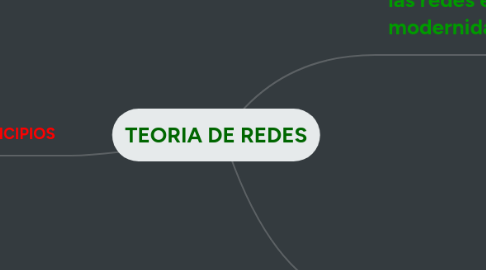
1. LOS 7 PRINCIPIOS
1.1. Somos nosotros quienes damos estructura a la red
1.1.1. This document describes our Go To Market Plan for <Product Name>.
1.2. Nuestra red nos da forma a nosotros
1.3. Nuestros amigos nos influyen
1.4. Los amigos de nuestros amigos nos influyen
1.5. La red tiene vida propia
1.5.1. Training
1.5.2. Channels
1.5.3. International
1.5.4. Public Sector
1.5.5. Sales
1.5.6. Marketing Communications
1.5.7. Product Management
1.6. La experimentacion obtiene resultados
1.7. Los lazos debiles empiezan a funcionar
2. LEYES
2.1. Seis grados de separacion y tres grados de influencia
2.2. Los pajaros del mismo plumaje vuelan juntos
2.3. Ubicacion ubicacion, ubicacion
2.4. La imitacion pulsa el contagio
2.5. No es lo que sabes es lo que ellos saben
2.6. La experimentacion obtiene resultados
2.7. Los lazos debiles empiezan a funcionar
3. Principios generales de las redes en la modernidad
3.1. lLas redes tienen una estructura
3.1.1. Situational Analysis / Drivers
3.1.1.1. What is driving us to do this?
3.1.1.2. SWOT Analysis
3.1.1.2.1. Strengths
3.1.1.2.2. Weaknesses
3.1.1.2.3. Opportunities
3.1.1.2.4. Threats
3.1.1.3. Customer Findings - What have we learned from customers?
3.1.2. Competitive Analysis
3.1.2.1. Do we have competitors and threats in these target markets with the proposed offerings?
3.1.2.2. What are our competitors doing and how are they positioning?
3.1.2.3. How do we position against each competitor?
3.1.3. Target Customer(s)
3.1.3.1. Buyer Profile
3.1.3.1.1. Title
3.1.3.1.2. Industry
3.1.3.1.3. Geography
3.1.3.1.4. Business Size
3.1.3.2. Influencer Profile
3.1.3.3. User Profile
3.1.3.4. What do customers want and need?
3.1.3.5. What business problems do each of these customers have?
3.1.4. Customer Segmentation
3.1.4.1. Which customers or sets of customers do we sell to?
3.1.4.2. What are the target market segments that we want to go after?
3.1.4.3. What are the distinct problems for each segment of the market?
3.1.5. Total Available Market
3.1.5.1. New Prospects
3.1.5.1.1. How much of each target segment have we penetrated?
3.1.5.1.2. How much opportunity is available in each target segment?
3.1.5.2. Existing Customers
3.1.5.2.1. Can we up-sell existing customers?
3.2. Tienen un comportamiento emergente
3.2.1. Service Offer
3.2.1.1. What are we selling?
3.2.1.2. Product Definition
3.2.1.3. Pricing
3.2.1.4. Packaging
3.2.1.5. Positioning
3.2.2. Value Proposition
3.2.2.1. What is the Value Proposition to the Customer?
3.2.2.2. What pain are we solving?
3.3. Dinamismo
3.3.1. Revenue Forecasts
3.3.1.1. Revenue and P&L Forecast (5 Years)
3.3.1.2. Revenue should be split out quarterly
3.3.2. Cost Analysis
3.3.2.1. Should include a description of the costs in entering this business and profitability analysis
3.3.3. Profitability Analysis
3.3.3.1. P&L for the offer to include gross margin, net income and break even analysis.
3.4. Autonomia
3.4.1. Sales Strategy
3.4.1.1. Direct Sales Strategy
3.4.1.2. Inside Sales Strategy
3.4.1.3. Channel Sales Strategy
3.4.2. Partner Strategy
3.4.2.1. Channel Strategy
3.4.2.1.1. What 3rd party channels should we consider for reselling this service?
3.4.2.2. Technology Partnerships
3.4.2.2.1. What technology vendors (if any) do we need to work with to execute on this plan?
3.4.2.3. Solutions Partners
3.5. Poder
3.6. Estabilidad
3.7. Topologia
3.8. Evolucion de abajo hacia arriba
3.8.1. M&A?
3.8.2. Risk Analysis & Mitigation
